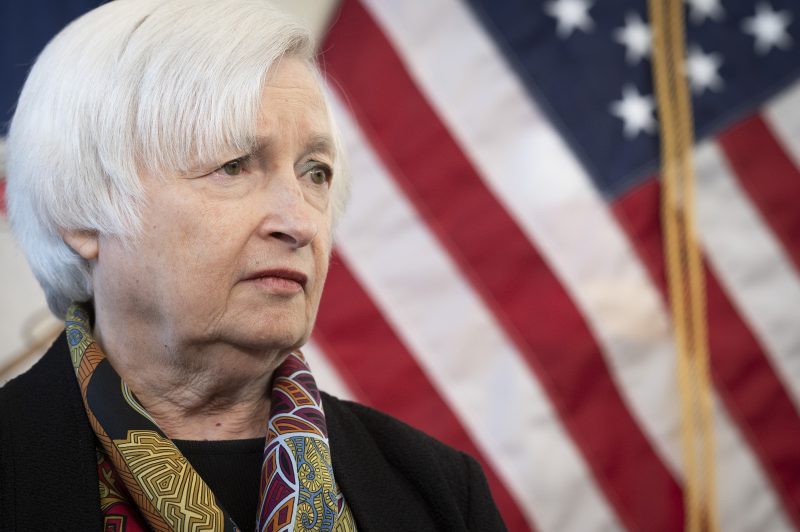
We might as well stop calling debt limit measures ‘extraordinary’
On Thursday, the United States reached the statutory limit on its ability to incur debt needed to pay its obligations. That’s a dry, dull articulation of what’s happening, but you were probably able to parse it pretty easily, given that you’ve read some variation on it so many times over the past few years. The country has a limit on how much debt it can accrue and, when that limit is reached, the government has of late either simply shrugged and lifted the limit entirely for a while or collapsed into paroxysms of partisan hostility over how much it should be raised.
Treasury Secretary Janet L. Yellen has assured legislators that the government can undertake extraordinary measures to pay its bills for at least a little while, giving Congress a now-familiar window in which to figure out the shape of those paroxysms. But we might as well stop calling these measures “extraordinary,” given that they are now just about as normal as the debt limit itself.
Before 2011, the process of raising the debt limit was pro forma. The government would set a limit (as it has for more than a century) and then it added to its debt to pay bills that Congress had approved. When the limit proved insufficient, Congress voted to raise it and the process repeated.
But then Democrat Barack Obama was elected president and, two years later, Republicans retook control of the House. In short order, the negotiating power of the debt limit became apparent: If you could demonstrate a willingness to let the United States default on its obligations by not allowing the government to accrue more debt, you could conceivably force concessions from the executive branch. And so, with that willingness amply demonstrated, the debt limit became a regular point of leverage.
From 2008 to 2010, the debt-limit process worked as it long had, raised as needed to meet obligations. From 2011 to 2021, though, the country was almost always in one of two situations: at the limit and in “extraordinary measures” mode, or with the debt limit suspended or automatically adjusted to match the debt.
Nearly all of Donald Trump’s presidency, for example, was in a period when the debt limit was suspended. From the day he took office until Jan. 20, 2020, the debt increased by 16 percent. Over the last year of his presidency, spurred by the coronavirus pandemic, it increased another 20 percent.
Much of Joe Biden’s presidency has operated under more normal debt-limit boundaries, as Democrats controlled the House and Senate. But now the limit is once again up and the country is once again doing the ordinary “extraordinary measures” thing and the paroxysms are getting underway.
That this is occurring now, with a Democratic president and a Republican House, is not an accident. This, too, has been the pattern of late: That combination has been more likely to yield a fight over the debt limit. That’s in part because Republicans in Congress don’t want to threaten to break the economy when they also control the White House and in part because Democrats in Congress have not created a believable impression that they would actually break the economy. This particular brinkmanship requires a combination of brash actors and sober respondents that seems to align with the partisan distribution in Washington that we now see.
The shift over the past 12 years is apparent when we simply consider how much of the time the country has been operating under special debt-limit conditions. To the right of the chart below are days in each year when the country was operating with a debt limit that wasn’t at risk of being immediately breached. At left are the days when the system was not operating normally.
In September, I noted that the debt limit at this point existed not to constrain spending, since it doesn’t, but as a political cudgel. At the time, some Democrats were agitating for a permanent suspension of the limit, recognizing the likelihood that Republicans would soon retake control of the House. President Biden, however, rejected the idea.
He may soon wish he hadn’t.
